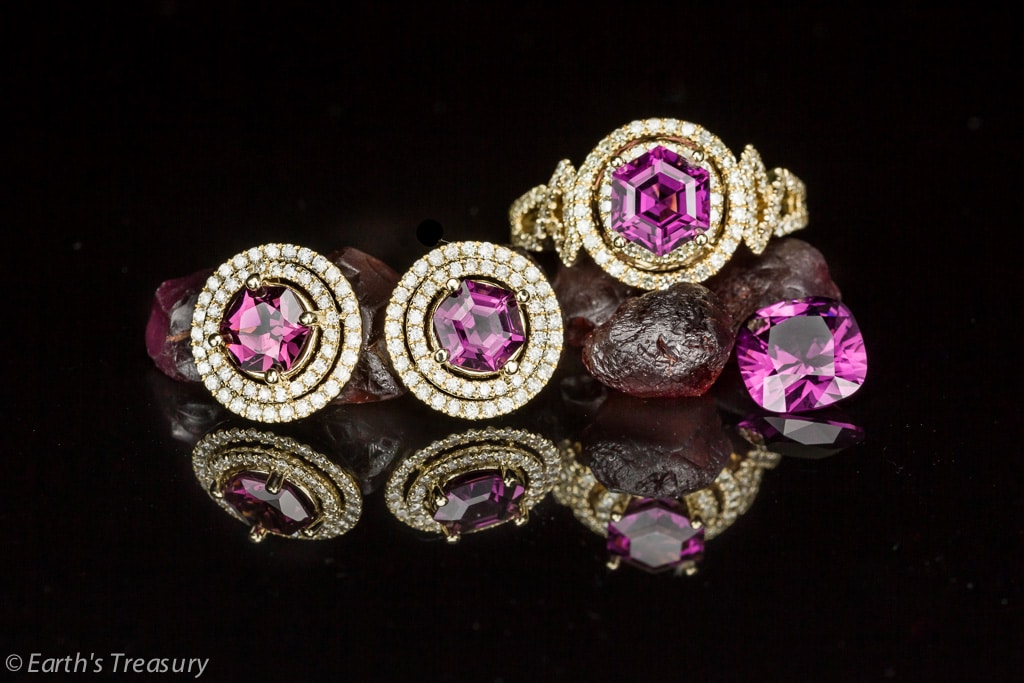Rhodolite

Overview
Rhodolite is the name used for gem garnets that are a pinkish red to purple-red color. It is composed of two of the end species of garnet in roughly equal proportions–almandine and pyrope. Iron is responsible for giving rhodolite the lovely ranges of reds to purple-reds that fine rhodolites are prized for. Rhodolites can have inclusions of fine rutile needles (these inclusions are referred to as “silk” and can give the garnet a soft glow in the hand that is difficult to capture in a photo) or tiny internal crystals of zircon and other minerals. Generally the best gems are eye clean. Rhodolite can often be found in larger sizes, but as they get larger they can become dark. Rhodolite garnets have excellence brilliance due in part to a high refractive index of 1.760. With a Mohs hardness of 7-7.5, rhodolite is a durable gemstone.
Named Species/Varieties
There are a number of regionally-named varieties of rhodolite garnet. One of the most well-known is Umbalite, a more purple-magenta variety found in the Umba River Valley of Tanzania. Recently some remarkable purple garnets have been found in Mozambique and been marketed as “Grape Garnets” or “Purple Garnets,” although they are simply a very purple variety of rhodolite.
Where is it found
The first gem-grade rhodolites were found in North Carolina, and given the name in honor of the similarly-colored rhododendron flowers native that region. Gem grade rhodolites today are mostly mine in Africa, with significant deposits in Kenya and Tanzania. It is also found in Sri Lanka, Nigeria and a few other localities around the world.
Treatments
Rhodolite is not treated.
Use in jewelry
The brilliance and hardness of rhodolite make a great choice for jewelry, especially given the popularity of red-colored gemstones in general.
Buy rhodolite
You can look at my current inventory of loose gemstones online here: https://earthstreasury.com/product-category/gemstones/garnet/umbalite/

